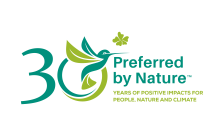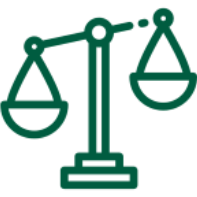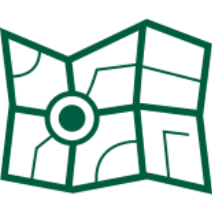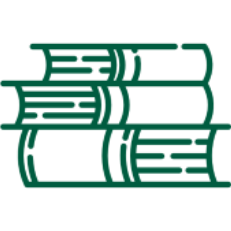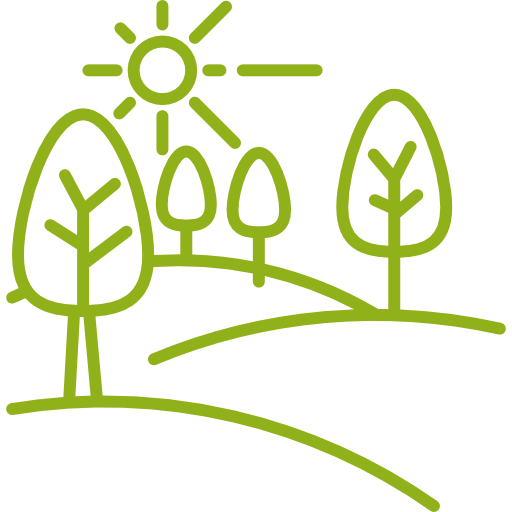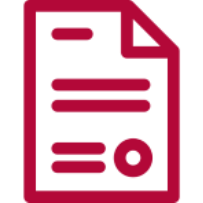Timber Risk Score: 0 / 100 in 2017. The Timber Legality Risk Assessment contains an evaluation of the risk of illegality in Honduras for five categories and 21 sub-categories of law. We found:
-
Specified risk for 19 sub-categories.
- Low risk for 0 sub-categories.
- No legal requirements for 2 sub-categories.
Forest cover in Honduras is estimated to cover 48% of the country, of which:
- about 57.5% is broadleaf forest
- 36% coniferous forests
- 5% mixed forests
- 0.9% mangrove forests.
With respect to planted forests, a total of 29,940 ha of plantations certified by the government of Honduras have been reported (about 0.5% of the total forest area).
The government manages the National Public Forest (Bosque Público Nacional) and regulates municipally-owned and private forests through the Institute for Forest Conservation, Protected Areas and Wildlife (Instituto de Conservación Forestal Áreas Protegidas y Vida Silvestre, ICF) and other relevant agencies.
Three types of land tenure for forest property are recognised:
- Public land, which may be nationally or municipally-owned property
- Private land, which can be owned privately, communally, tribally or collectively
- Government (fiscal), whereby tThe government assigns tenure rights to a public party.
Commercial harvesting is subject to a management plan, which is in effect for a minimum period equal to the rotation period, and an Annual operating plan.
Reportedly, Honduras is experiencing high levels of illegality throughout its forest sector, including both at the forest level and in the supply chain. This can undermine efforts to obtain robust information on the harvest-origin of wood products.
Several legality risks are present in Honduaran timber supply chains. The risks are wide-ranging and appear across all categories of law. If you are sourcing timber from Honduras you should take care to ensure the extensive risks identified are not present in your supply chains, or have been sufficiently mitigated.
Score: 23 / 100 in 2021
Rank: 157 out of 180 countries in 2021
Log export ban: Broadleaf species can only be exported as finished furniture products and furniture parts. Export ban on hardwood and sawnwood.
There are currently no armed conflicts in Honduras according to the Council on Foreign Relations' Global Conflict Tracker.
According to the Uppsala Conflict Data Program there were 125 deaths from 2010-2019.
VPA status: Negotiating
FSC Certified Forest Area: 17,815 hectares (4 December 2019).
Information Gathering
Timber sources
- Find out the different sources of legal timber.
- Determine which source type your timber comes from.
- Find out the main documents that can be used to indicate legality throughout the supply chain.
| Timber source type | Description of source type |
|---|---|
|
National public forest |
Timber from forests in government areas assigned to private individuals or communities through a management contract which may be short-, medium- or long-term. |
|
Municipality-owned (ejidales) – public forest |
Timber from forests under areas owned by municipalities assigned to private individuals or communities through a management contract which may be short-, medium- or long-term. |
| Private forest | Timber from privately owned natural forests. |
| Forest plantations | Timber from plantations, which can be publicly, privately and municipality owned. |
| Agro-forest plantation systems | Timber from agroforestry systems with coffee or other crops grown in association with timber species. |
Documents to indicate legality
|
Forest level |
|
|
Trade and transport |
|
|
Export and custom
|
|
Risk Assessment
Risk assessment summary
|
Legal rights to harvest |
|
Taxes and fees |
|
|
Timber harvesting activities |
|
|
Third parties' rights
|
|
Trade and transport |
|
Specified risk species
| Common/trade name | Scientific name | Risk information |
|---|---|---|
|
Bigleaf mahogany |
Swietenia macrophylla |
CITES-listed. There are risks of illegal logging and trade with CITES species |
|
Honduran mahogany |
Swietenia humilis |
CITES-listed. There are risks of illegal logging and trade with CITES species |
|
Rosewood |
Dalbergia spp. |
CITES-listed. There are risks of illegal logging and trade with CITES species |
|
Guatemalan fir |
Abies guatemalensis |
CITES-listed. There are risks of illegal logging and trade with CITES species |
|
Spanish cedar |
Cedrela odorata |
CITES-listed. There are risks of illegal logging and trade with CITES species |
Risk Mitigation
Mitigate the risks in your supply chain
Learn which actions we recommended to mitigate the risks associated with the timber sources from Honduras.
Source Certified Materials
NEPCon believes that third party certification (for example FSC and PEFC certification) can provide strong assurances of the legality of the products they cover. Companies seeking to mitigate the risks of sourcing illegal timber should seek to purchase third party certified materials wherever possible.
While the European Timber Regulation does not include an automatic “green lane” for certified products, it does recognise the value of certification as a tool for risk assessment and mitigation. The European Commission says that companies “may rate credibly certified products as having negligible risk of being illegal, i.e. suitable for placing on the market with no further risk mitigation measures, provided that the rest of the information gathered and the replies to the risk assessment questions do not contradict such a conclusion.”
For more information on using certified materials in your due diligence, including how to assess whether a certification system meets EUTR requirements, see the page on Certification and Due Diligence.
Mitigation recommendations
We have two tools to help you mitigate risks for Honduran timber supply chains:
- the Risk Mitigation Guide gives you a detailed overview of risks in Honduras, and how to mitigate them.
- the Document Guide provides you with a list of all required documents and examples of key documents and how to use them in mitigating risks.
The tools above give you the most information. Below is a summary of our five recommended actions to mitigate the risks associated with timber sources from Honduras.
1. Fully map your supply chain
- Our supply chain mapping tool can help you do this.
2. Obtain and verify documents
- Forest level documents
- Registration of the title of the public land in the Inalienable Public Forest Resources Catalogue (Catálogo del Patrimonio Público Forestal Inalienable (CPPFI))
- Certificate of property title registration with its cartographic map
- Registration of personnel and machinery with the ICF
- Forest Management Plan, including an Environmental Impact Assessment (EIA)
- Management Contract; Annual Operating Plan (AOP)
- Approved harvesting plan (plantations and/or agroforestry systems)
- Approved Salvage plan
- Maps
- ICF technical audits reports
- Reports done by the Independent Forest Monitoring (Monitoreo Forestal Independiente (MFI))
- Tax related documents
- Receipts and invoices for the payment of taxes and administrative fees. The invoices shall be stamped and signed by the applicable authority
- Companies shall be registered in the National Taxpayer Register (Registro Tributario Nacional RTN) for natural or legal persons
- Third parties´ rights
- Documentation related to the process for awarding land titles to the (indigenous and Afro-Honduran - Pueblos Indígenas y Afrohondureños (PIAH)).
- Health and safety/Employment related documents
- Evidence of workers registered on the social security program, or private medical insurance or copy of contingency plan for health care in case of health problems
- Employment Contracts
- Trade and transport documents
- Sales invoice
- Shipping waybill
- Export documents
- Phytosanitary permits
- Statement of provenance (dictamen de procedencia)
- Certificate of Origin required for CITES
- ICF audits reports in terms of classification of the product
3. Consult with stakeholders
- Neighbours, local communities, community members, communal organizations, advisory councils.
- Authorities in the ICF (Instituto de Conservación Forestal Áreas Protegidas y Vida Silvestre); the IP (Instituto de la Propiedad), Municipality authorities
- Ministry of Finance (Secretaría de Finanzas (SEFIN- SAR)).
- Co-managers of protected areas
- Employees, employers, representative of workers and/or their associations, IHSS inspectors..
- Indigenous and Afro-Honduran - Pueblos Indígenas y Afrohondureños (PIAH))
- Authorities responsible for the national processes of ENCTI.
- Authorities responsible for the international processes VPA-FLEGT.
- International Regional Organization for Plant and Livetock Health (Organismo Internacional Regional de Sanidad Agropecuaria (OIRSA).
- DEI authorities.
4. Carry out on-site verification
- Confirm that the information on the inventory and the treatments used match with AOP
- Confirm that the trees selectedfor harvesting in the field match the planning in the AOP
- Confirm that that boundaries of the felling areas match the maps of the AOPs
- Confirm that protected sites and boundaries are clearly identified and respected
- Confirm that use of salvage plans are justified and measures included on the salvage plan is complied with
- Confirm compliance with technical norms for harvesting in the field
- Confirm that the technical inspections done by authorities verify that the protected areas and regulations for protected species are respected
- Confirm that seed trees and trees for wildlife habitat are respected and only the volume and number of trees included on the AOP has been harvested
- Confirm that the measures proposed on the environmental impact statement are effective
- Confirm that protection safety equipment and first aid kit is used in the field.
- Confirm that that children under 14 years of age are not doing forest harvesting work
5. Conduct targeted timber testing
- Conduct timber testing on samples of purchasd material to verify the species or origin of timber, where appropriate
